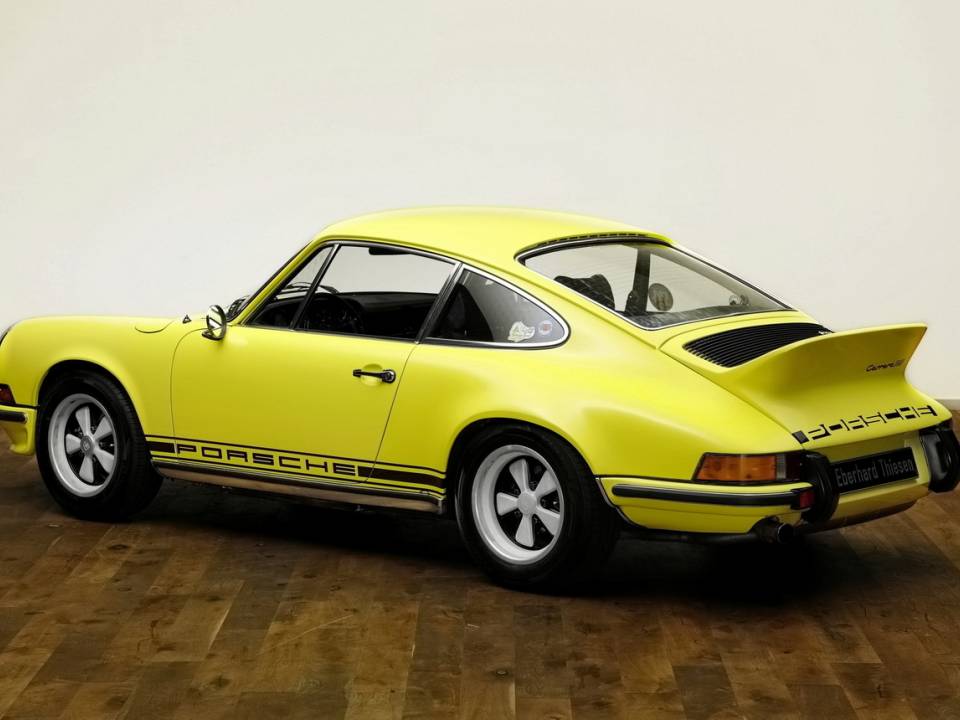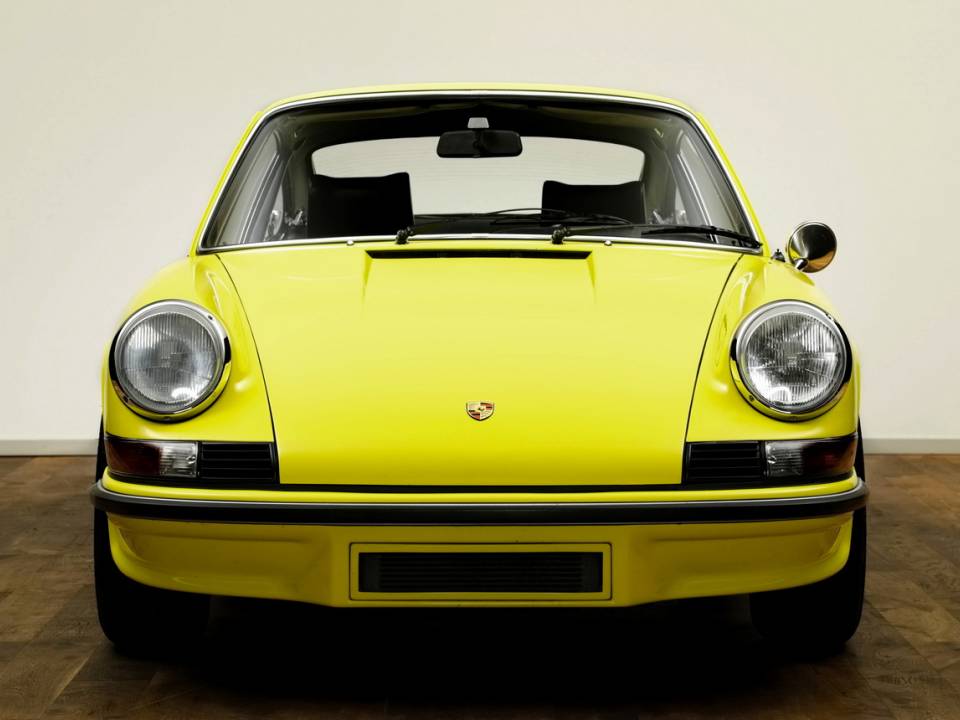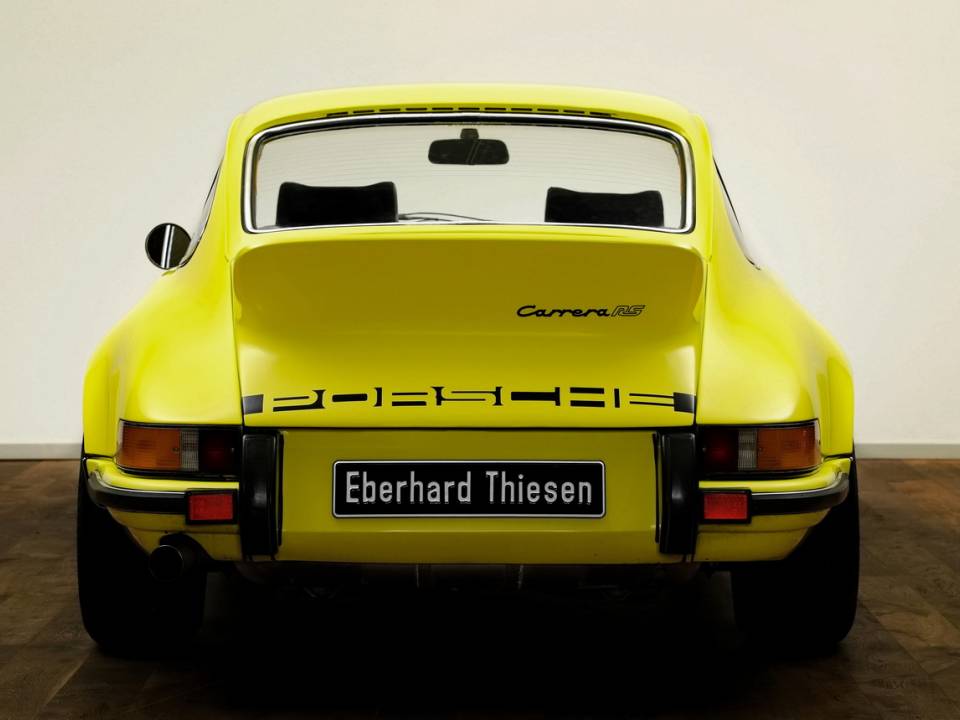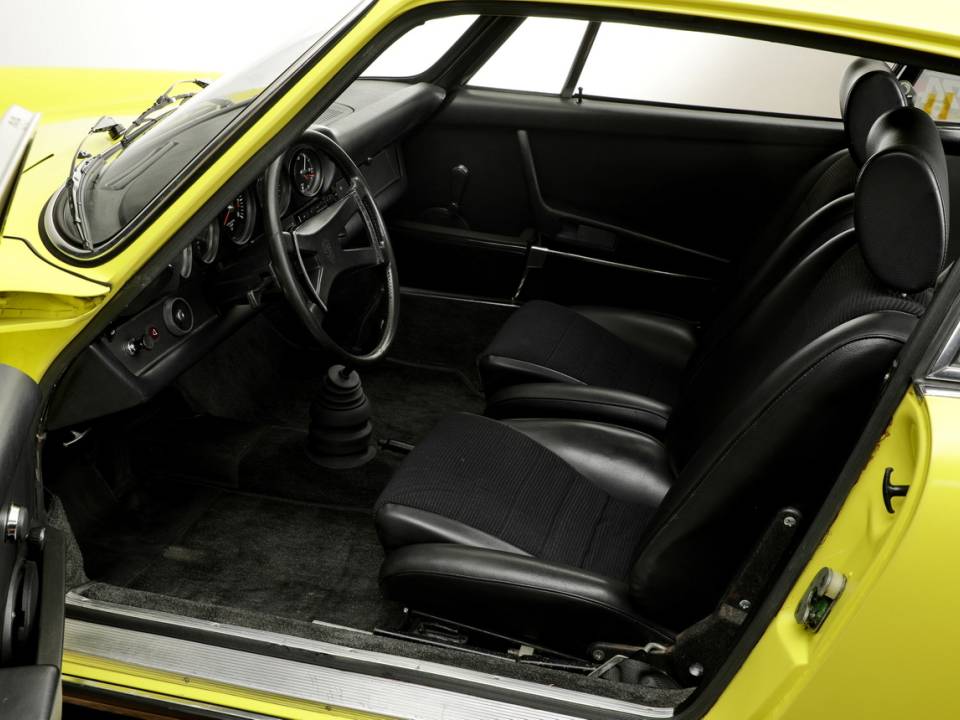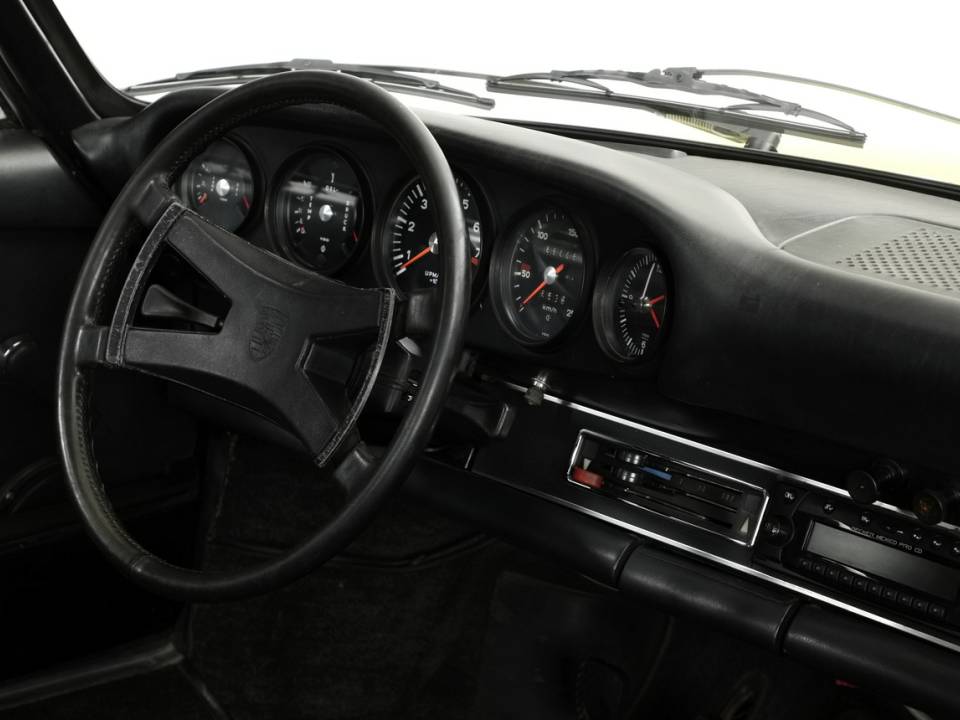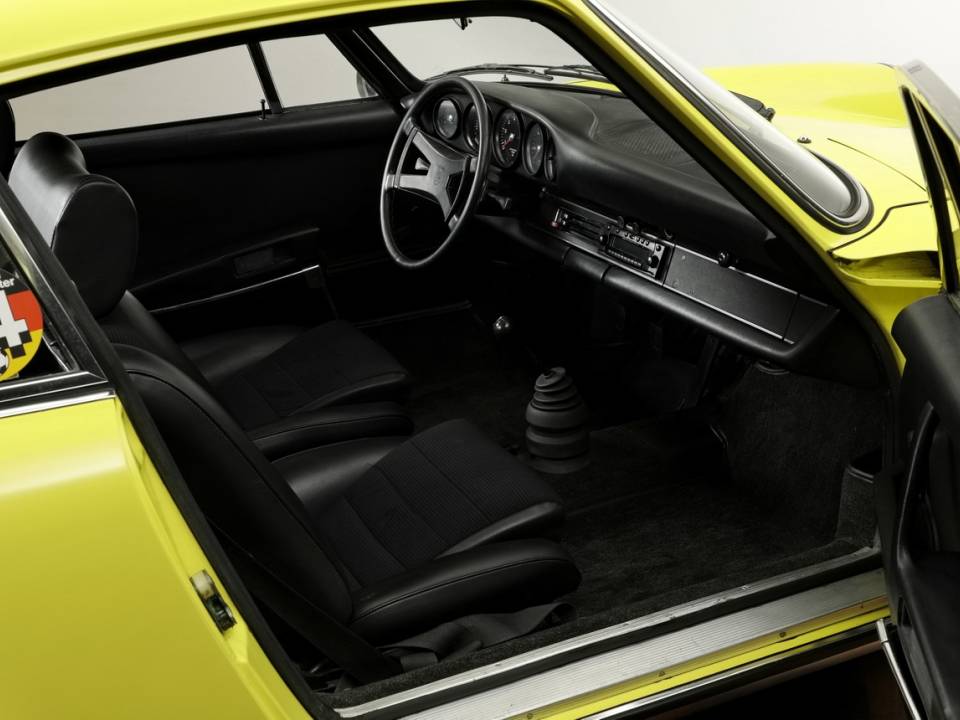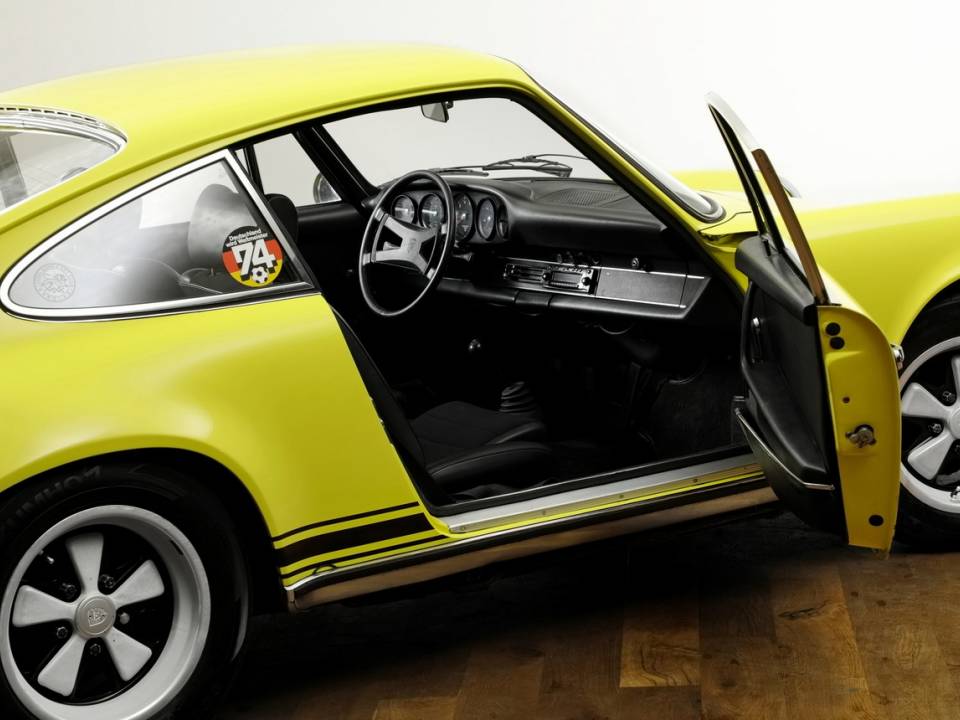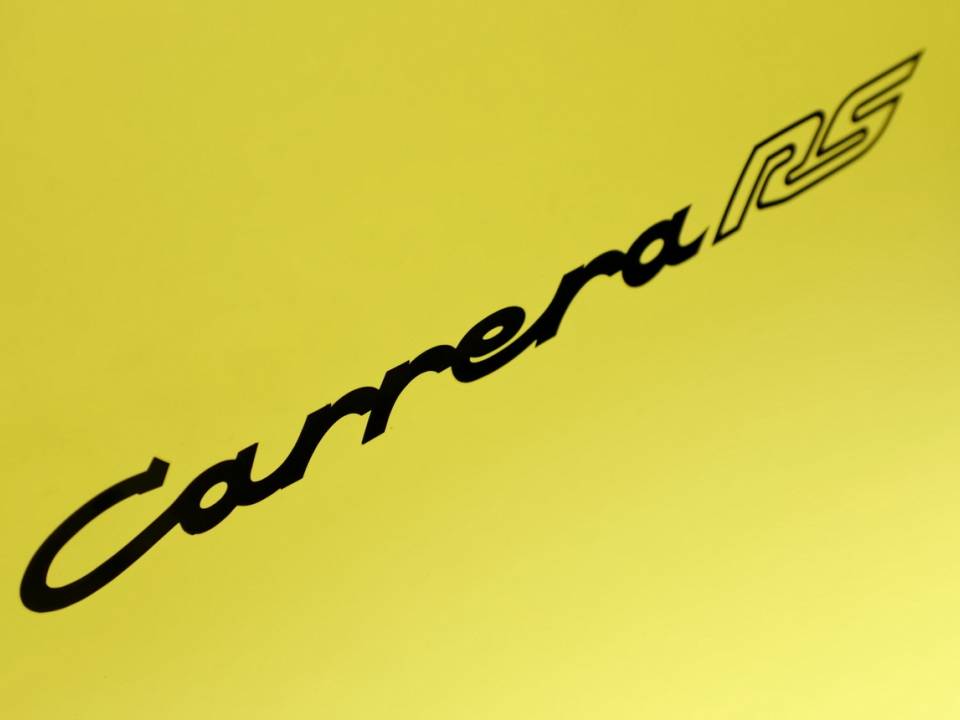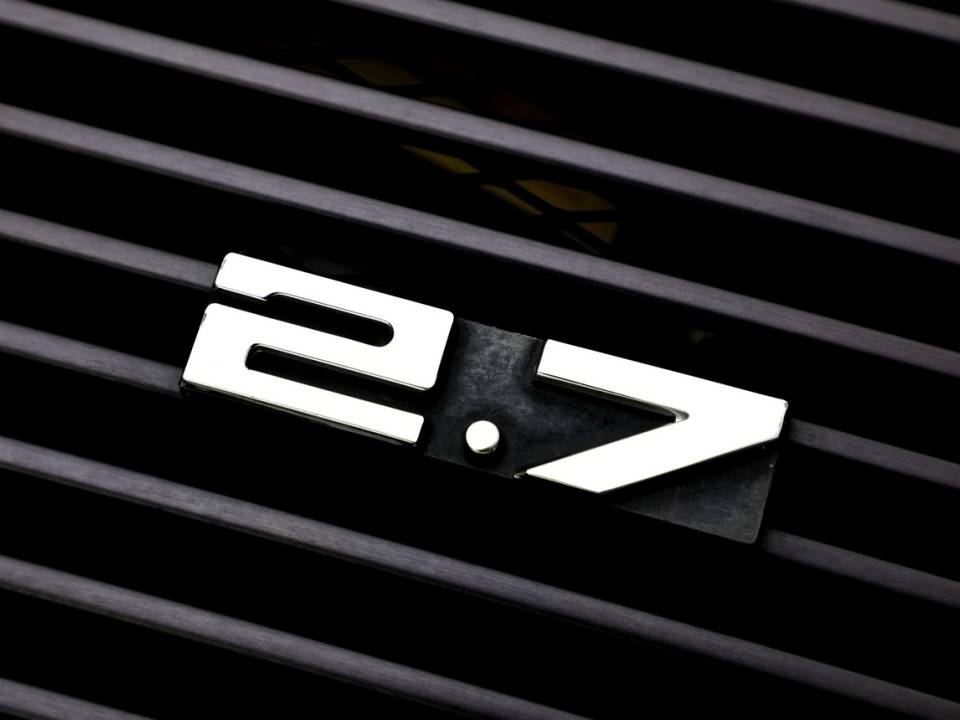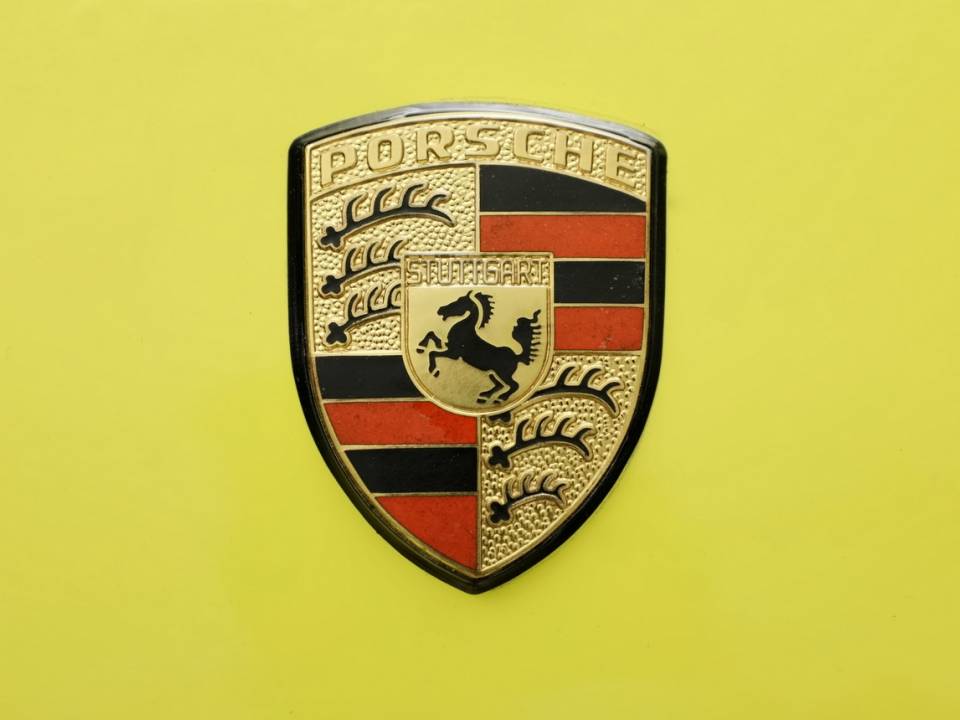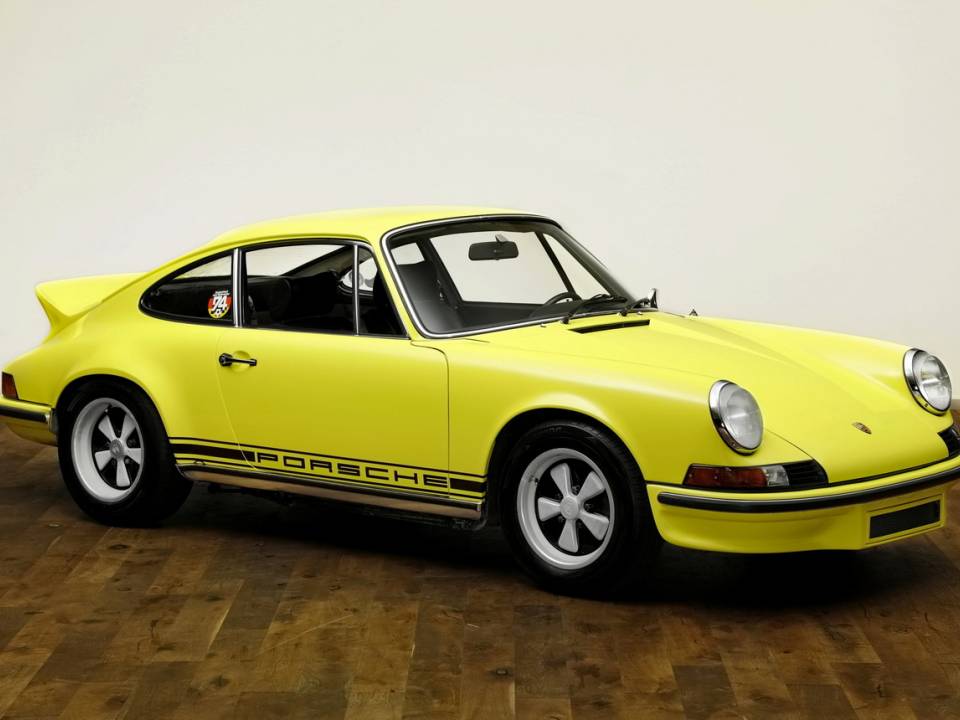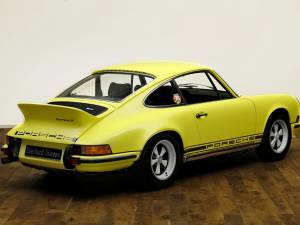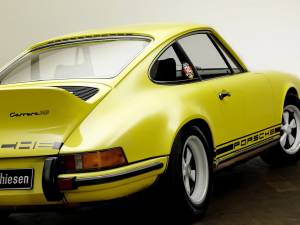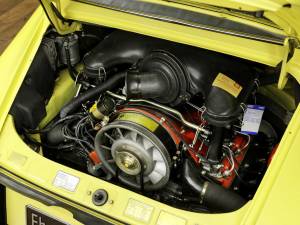1972 | Porsche 911 Carrera RS 2.7 (Touring)
Todos los servicios para este vehículo
Descripción
- Original colour scheme in light yellow repainted approx. 20 years ago and interior in black leatherette/fabric combination
- Ownership history fully known with only four owners in Northern Germany, of which over 30 years with the penultimate owner
- Original care passport and on-board literature as well as extensive invoice documentation available
- The engine was rebuilt according to Carrera RS specifications by a recognised engine specialist; technique partially revised
- Bodywork and technique overhauled by well-known specialist
The Porsche 911 2.7 Carrera RS was launched in 1972 for homologation in rallying and racing and became a sophisticated bestseller. Instead of the required 500 units, 1,580 vehicles were finally produced, of which 1,308 were the comfort-optimised "Touring" version. Today, the 911 Carrera RS is one of Porsche's ultimate legends and rare classic models. This 911 Carrera RS Touring (code M472) was delivered via the Schmidt-Koch dealership in Bremen and first registered on 11. December 1972 to a company in Bremen (name known). Based on the chassis number, it is the 104th vehicle built and thus belongs to the first 500 examples manufactured for homologation. The original colour scheme was and is "light yellow" (colour code 117-8-1) with interior in black. The Recaro sports seats are finished in a fabric/leatherette combination. The paintwork was renewed in the course of the partial overhaul of the body (including door sills) in the mid-1990s. In April 1980, it was sold to the second owner in Hamburg. As early as May 1981, the car was passed to the third owners, a married couple in the north of Hamburg. The old original vehicle registration document on these owners is available. The couple kept the Carrera RS for a full 33 years and used the car regularly. Numerous invoices for service, repair and overhaul work are available from this time. Some of this partially more extensive work was carried out by the well-known Porsche 911 specialist Ingo Stimming in Schleswig-Holstein. Since 2014, the Carrera RS has been with its fourth and current owner in Hamburg. The engine was rebuilt respectively revised in 2015 at a well-known engine specialist according to Carrera RS specifications with corresponding performance. A related invoice and performance measurement are available. In the course of this, a new clutch was installed and the existing 915 gearbox was revised. The bearings, oil pump and main bearings of the crankshaft were also renewed and the throttle valves of the injection system were replaced.
The Porsche 911 was introduced in 1964 as the successor to the 356. It was then built for almost 10 years as the first generation – the so-called "F-Model" or "Urmodell" – with numerous modifications in various versions until it was replaced by the modified "G-Model" in 1973. In October 1972, the today legendary Carrera RS 2.7 was presented at the Paris Motor Show. RS stands for “Rennsport” (racing) and this model was actually only intended for homologation in rally and motorsport with a required number of 500 units. Weight, engine, chassis and aerodynamics are intensively optimised for motorsport use. By the end of November, all 500 vehicles had been sold and Porsche decided to continue production. The air-cooled six-cylinder boxer engine with a displacement of 2.7 litres (engine type 911/83) had a mechanical double-row injection pump and produced 210 hp. It was the first 911 to be given the "Carrera" designation again, which had previously marked the most powerful 356 models. With a top speed of 245 km/h, the Carrera RS was the fastest German series car of its time and also the first road sports car in the world with a front and rear spoiler. The distinctive rear wing, nicknamed the "duck-tail", significantly improved driving stability. The special front spoiler had an opening in the middle for an oil cooler. Differently wide wheels on the front and rear axles ensured higher cornering speeds and stronger braking performance. In the rear axle area, the body is 42 millimetres wider. In order to reduce the weight for homologation, among other things, thin sheet metal, plastic parts and thin glass windows were used and insulation was dispensed with. The model was offered in two versions: "Sport" and "Touring". The latter offers some comfort, while the "Sport" model is even more consistently trimmed to lightweight construction: there are only two lightweight seat shells and, among other things, rear seats, floor carpets, coat hooks and the armrests of the doors are missing. Moreover, the rear bumper is made of plastic. The Carrera RS 2.7 sold excellently far beyond its homologation requirement, so that in the end 1,580 examples were produced, of which 1,308 were Touring and 200 Sport versions. In the course of the thorough modification of the 911 in 1973 (so-called "G model"), there was then the Carrera as the top version, in which the engine of the 911 Carrera RS continued to live on until 1974.
Detalles del vehículo
Datos del vehículo
- Marca
- Porsche
- Serie del modelo
- 911
- Modelo
- 911 Carrera RS 2.7 (Touring)
- Código fabricante
- "Urmodell"
- Primera fecha de registro
- No provisto
- Año de construcción
- 1972
- Kilometraje (leer)
- 89.005 km
- Número de chasis
- No provisto
- Número de motor
- No provisto
- Número de la caja de cambios
- No provisto
- Coincidencia de números
- No
- Número de propietarios
- No provisto
Detalles técnicos
- Carrocería
- Coupe
- Potencia (kW/CV)
- 154/210
- Capacidad cúbica (cm³)
- 2687
- Cilindro
- 6
- Puertas
- 2
- Manejo
- Izquierda
- Caja de cambios
- Manual
- Marchas
- 5
- Engranaje
- Trasero
- Freno delantero
- Disco
- Freno trasero
- Disco
- Combustible
- Gasolina
Configuración individual
- Color exterior
- Amarillo
- Color según fabricante
- Code 117-8-1
- Color interior
- Negro
- Material interior
- Cuero artificial
Condición, registro y documentación.
- Condición
- Restaurado
- Tiene peritaje
- No provisto
- Condición
- Informe de inspección del libro
- Matriculado
- Listo para conducir
Ubicación
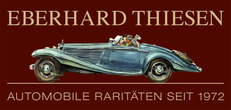
Eberhard Thiesen GmbH & Co. KG
Eberhard Thiesen
Tarpen 40 - Halle 12
22419 Hamburg
🇩🇪 Alemania



